Green Pioneers in North Texas
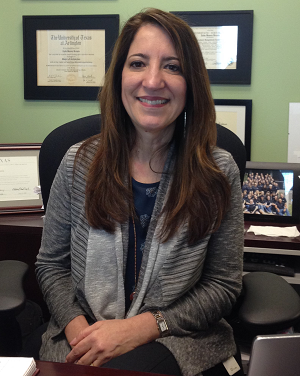
Zaida Basora (OH 1987)
AIA Fellow, Vice President, Huitt-Zollars, Dallas, Texas
Growing up in Puerto Rico, Zaida Basora was surrounded by Spanish colonial architecture and a culture that celebrated design for people and nature. She came to Dallas in the mid 1980's to study and practice architecture. In the mid 1990's she accepted a position with the City of Dallas in the Public Works department. Nationwide, concerns were being raised about clean waterways and lowering energy consumption, but in Dallas, conversations about conservation were difficult to have. However, by the early 2000's there was interest in energy efficiency and cost savings. For Zaida, attending the USGBC (U.S. Green Building Council) National Conference in Austin in 2002 was a milestone experience. She was at the strategic center of city concerns for resource efficiencies, state budget mandates and the rise of the USGBC. She was adept at leading task forces and building consensus between the community, the building industry, the city staff and the city council. Working with her supervisors in the Assistant City Manager's office, in 2003 she implemented the Dallas Green Building program for city facilities which was the first in the nation. Also in 2003, she was elected to the USGBC National Board of Directors, and played a key role in the formation of the USGBC North Texas Chapter. She continued to push for change, and in 2008, the Dallas Green Building code was adopted.
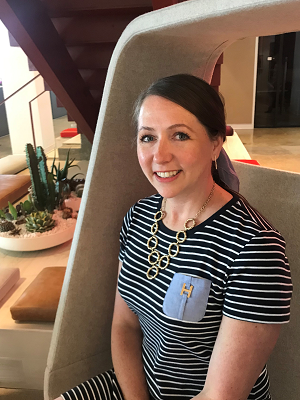
Denise Bates (OH 1988) Photo Courtesy of Gensler
RID, Senior Designer and Resilient Design Leader, Gensler, Dallas, Texas
As an Environmental Design student at Texas A&M, Denise Bates made a conscious decision to focus on interior design and architecture. She saw an opportunity for a sustainable approach that could both reuse existing structures and better integrate interior functions with building design. Denise has remained an advocate for the building occupant throughout her career. Her experience began with an office furniture manufacturer specializing in workplace processes. Working in architectural practice, she gained expertise in multidisciplinary project types including restaurants, retail, multi-family, government agencies and global corporate accounts. Her participation in the Dallas AIA Committee on the Environment and a series of grassroots efforts in the early 2000's resulted in the formation of the USGBC North Texas Chapter. She has seen the evolution of green building programs from LEED to WELL and Living Building Challenge. As building and energy efficiency standards become more codified, the emphasis is shifting to occupant health and well-being. In her current position at Gensler as Resilient Design Leader, her conversations with clients now include long term strategies addressing climate change and man-made threats. Throughout her career, Denise has maintained a hand's-on responsibility for project documentation and implementation of the most advanced technical tools for drawings and project management. Her efforts in interior design education include mentoring students and collaborating with colleagues and industry partners on transparency in material and furnishings health.
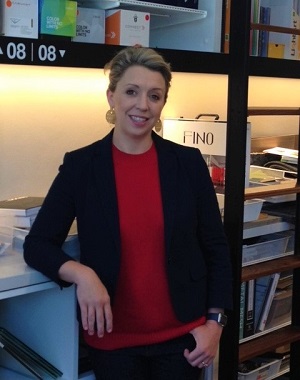
Mary Dickinson (OH 1989)
Regional Sustainable Design Leader, Perkins & Will, Dallas, Texas
As the Regional Sustainable Design Leader for the Texas offices of Perkins and Will, a member of the firm's Sustainable Design Council, and Co-Director with Max Richter of the Materials Performance Research Lab, Mary Dickinson integrates research thinking, advanced sustainable technologies, healthy material protocols, and evidence-based processes across the firm's practice. Her lifelong interests in nature, the environment, health, and science are characterized by questions she has raised throughout her career. As an interior design major studying materials she began by asking, "What is it made of?" Working with Perkins and Will leaders, other issues arose, "How do we find the toxicants in materials?" Also, as she describes, the genome is how your body is affected by your genes, and the exposome is how you are affected by your environment. Now she and her colleagues are investigating the impact the built environment has on this dynamic. Mary has worked to develop information methodologies that enable designers to make healthy product recommendations to a client. First launched in 2009, the Perkins and Will Precautionary List identifies substances that have known or suspected health impacts for humans and the built environment. It is an example of transparency on multiple levels. The List continues to be updated as a result of communication between design professionals, researchers, and manufacturers. The platform's content will always be publicly available to all.

Don Ferrier (OH 1990)
CBG, Owner and CEO, Ferrier Companies, Fort Worth, Texas
Don Ferrier, CGB (Certified Green Builder), is the Owner and CEO of Ferrier Companies. As the third generation of Scottish immigrants who were stone masons and builders, he founded his business in 1984 in response to an increased need for high-performance construction methods addressing energy efficiency. Ferrier was one of the first builders in Texas to use structural insulated panels (SIPs) which provide high energy efficiency, superior strength, fire-resistance and sound insulating properties beyond typical stud construction. Additionally, SIPs combine pre-cut components and expedited assembly, positively impacting business operations due to time and cost savings. Ferrier has also advanced sustainable building best practices through expertise in site development, earth-sheltered construction, water conservation and net-zero technologies. In response to customer needs, the initial company split in 2004 designating Ferrier Custom Homes to address the residential market and Ferrier Builders to focus on commercial and remodeling services. The Ferrier mission is characterized by a family-owned and operated entrepreneurial business model, evidence-based performance research for green building technologies, award-winning projects and prototypes for new materials and methods, public education through on-site tours and case studies, increased rigor for green building credentials, and alliances with local, regional and national industry partners. Don Ferrier continues to advocate for green building as a speaker, teacher, and advisor to local, regional, national and international audiences.

Howard Garrett (OH 1991)
The Dirt Doctor, Landscape Architecture, Arborist, Organic Gardening, Natural Organics, Native Landscaping, Dallas, Texas
Howard Garrett graduated from Texas Tech with a degree in Park Administration and Landscape Architecture. An early career focus on golf course design and management evolved to include landscape architecture and design. He decided to become an organic person when his daughter Logan was born in 1985. A photograph he took of her when she was nine months old standing on the front porch with her hand to her mouth captures the moment - "she did what all kids do, pick up things and put them in her mouth." His concern for her health and possible exposure to environmental toxins launched an investigation of organic practice. Convinced that the health of the soil was the key, he began to educate and advocate through a column in the Dallas Morning News and a radio program about organic gardening, currently broadcasting to 200 markets. His listeners dubbed him "the Dirt Doctor," his brand and now his website. By 1988 he had committed his entire career to the research, education and promotion of organic products and practices. Milestone projects include the Frito-Lay Headquarters, Plano, 1988. Working with Sasaki Associates, Howard provided the landscape design of the plants, bed preparation and native landscaping protocols. He has written fifteen books, established the Texas Organic Research Center, developed an online course in organic land management, and maintains a rigorous public speaking schedule.

Stan Ingman (OH 1992)
Professor of Applied Gerontology, UNT College of Health and Public Service, Rehabilitation and Health Services Department, Denton, Texas
Growing up in Pennsylvania and West Virginia where the economy was based on industrial chemical production and coal mining, Stan Ingman experienced environmental degradation first-hand. An affinity for the outdoors and a concern for public health resulted in degrees in botany, rural communities and medical sociology. The "engaged university" offered a forum for multidisciplinary projects and research-based results. He arrived at UNT in 1990, and worked with Dr. Hiram Friedsam to create programs for the Center for Public Service. Sustainability was the basis for their conceptual model as expressed by The "Four E's" - Enterprise, Environment, Education and Empowerment. Their vision emphasized both the physical and social environment, finding connections between the aging population and the aging planet. Education and empowerment strategies would provide the tools for public health and economic well-being. During his thirty years at UNT, Stan has practiced his brand of "the engaged university" at the local, regional, national and international levels. Using his social science lens, he continues to identify relationships between human behavior and sustainable outcomes. Collaborative efforts include affordable housing, healthy neighborhoods, after-school programs, sustainable campus initiatives and green building technologies. Stan sees great potential in social media communication, data mapping and the citizen science model. He encourages his graduate students to "value networks" by combining multidisciplinary technical expertise with established grassroots groups in order to achieve lasting social change.
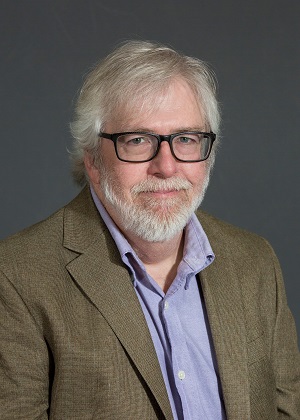
Randy Loftis (OH 1993)
Lecturer in the UNT Mayborn School of Journalism
Randy Loftis, M.A., Lecturer in the UNT Mayborn School of Journalism, is an award-winning journalist with over thirty years of experience as an environmental and investigative reporter. His career path has afforded him a profoundly unique perspective on environmental awareness, environmental justice, and environmental policymaking in North Texas. Randy began his career at The Miami Herald covering the Everglades. He came to The Dallas Morning News in 1989 during a time when multiple green initiatives where occurring at the city, regional, state and national levels. Air quality is one of the significant long-term public health and economic issues he has covered in North Texas. A series of breaking news stories on the air quality debate in the early 2000's investigated business leaders, energy industry players, non-profit agencies, Washington initiatives, and the Texas Legislature. Complex issues, multi-disciplined viewpoints and journalistic responsibility are reflected in the topic of Randy Loftis' 2007 Master's thesis: "Environmental journalism curriculum as an imperative of democracy…" It is the journalism educator's role to develop a curriculum that balances contextual understanding, personal connections, authentic storytelling, and rigorous evidence-based investigation. Randy also continues to advocate as an independent journalist and is active in non-profit journalism organizations including Investigative Reporter & Editors, the Society of Environmental Journalists (he was one of the founders), Texas Climate News, an online journal, and The National Geographic.
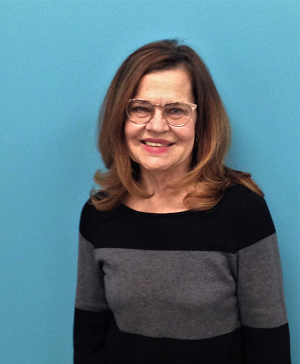
Mitzi Mills (OH 1994)
President, Anzea Textiles, Fort Worth, Texas
Mitzi Mills is the President, co-owner, co-founder and creative director of Anzea Textiles located in Fort Worth, Texas. She and her partner Bruce Doeren founded the company in 1990 as a premier source for commercial, or "non-residential," upholstery fabrics available for specifiers in the design industry. The Anzea story has been inspired by Mitzi's longstanding sense of social justice and environmental responsibility and her background as a graphic designer. Since its beginning, Anzea has been unique in the North Texas region because of its business model. As a wholesaler and distributor, Anzea manages an international supply chain, controls pricing, and maintains an international sales force. Anzea also exerts total creative control over product offerings, custom product design, marketing, and branding making it a comprehensive, autonomous enterprise. In the early 2000's Anzea became one of the select few contract textile houses to develop an exclusive collection of sustainable fabrics with the mill Rohner Textile AG, Switzerland, utilizing Rohner's Climatex® fiber system. Anzea continues to source advanced fiber technologies and introduce environmentally-conscious products. The company was instrumental in crafting the Facts Sustainability Certification (NSF/ANSI 336-2011 Standard) for commercial textiles, and remains active in policy and regulatory issues that apply to contract textile specification and use. The Anzea Environmental Statement expresses core company values and embraces suppliers that share the company's mission.
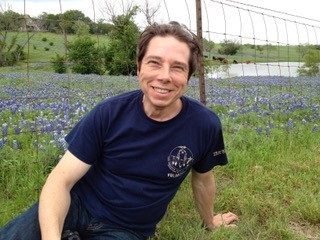
Gary Olp (OH 1995)
AIA Fellow, LEED Fellow, President of GGO Architects, Dallas, Texas
Gary Olp grew up outdoors in the Wisconsin suburbs and the rural Midwest. Whether tending the garden, working in a steel mill or building a fort, he was hand's-on, immersed in nature. Since the third grade, he had wanted to be an architect, to design buildings. He was inspired by the work of Frank Lloyd Wright to understand the integration of the natural world and the built environment. He attended the University of Cincinnati and created his own path of study. Early successes validated his design philosophy and entrepreneurial talents. In the 1980's, Gary moved to Dallas to pursue career opportunities with established architectural firms. Early projects included schools, shopping malls, and consistent improvements in sustainable approaches. He decided to focus on his own interests, and started GGO Architects, the first green architectural firm in Dallas. He was part of the North Texas collaborative efforts in the early 1990's. Gary was a key member of Sustainable Dallas, a grassroots effort of entrepreneurs dedicated to forming local coalitions and educating the public about green practices. In the late 1990's, Gary became intimately involved with the USGBC at the national and local levels, developing LEED rating systems and initiating the North Texas Chapter. Gary continues to advocate for community engagement. His approach is informed by a connection to the site, a thorough understanding of materials, and an intuitive design sense concerned with environmental stewardship.
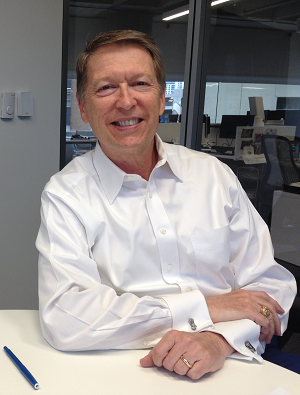
Kirk Teske (OH 1996)
FAIA, LEED Fellow, Global Director, Principal and Executive Vice President, HKS Architects, Dallas, Texas
Kirk Teske's interest in the built environment began with a love of drawing and a high school apprenticeship with a local architecture firm in his hometown, Longview, Texas. He began his career with HKS in Dallas in 1984 working with cost-driven developer clients who did not share his passion for passive design strategies. In the late 1990's he began managing projects for corporate clients. The Sabre Headquarters project in Southlake, Texas, which opened in 2001, was a milestone for Kirk and a catalyst for change in the region. Sabre saw a sustainable, environmentally responsible workplace as an opportunity to differentiate themselves as a company, attract and retain talent as well as reduce operating costs. It was the first time for Kirk and HKS to use energy modeling during design and to use the new LEED (Leadership in Energy and Environmental Design) rating system from the U.S. Green Building Council. For Kirk, working with Sabre had brought joy to the job and a realization that successful sustainable projects require an educated multidisciplinary network. In 2002, using his position of Chairman of the Dallas AIA Committee on the Environment (COTE) as a platform, he launched the formation of the North Texas Chapter of the USGBC. His contributions are motivated by a strong religious faith that embraces stewardship of the natural world and values health and wellbeing for people.

